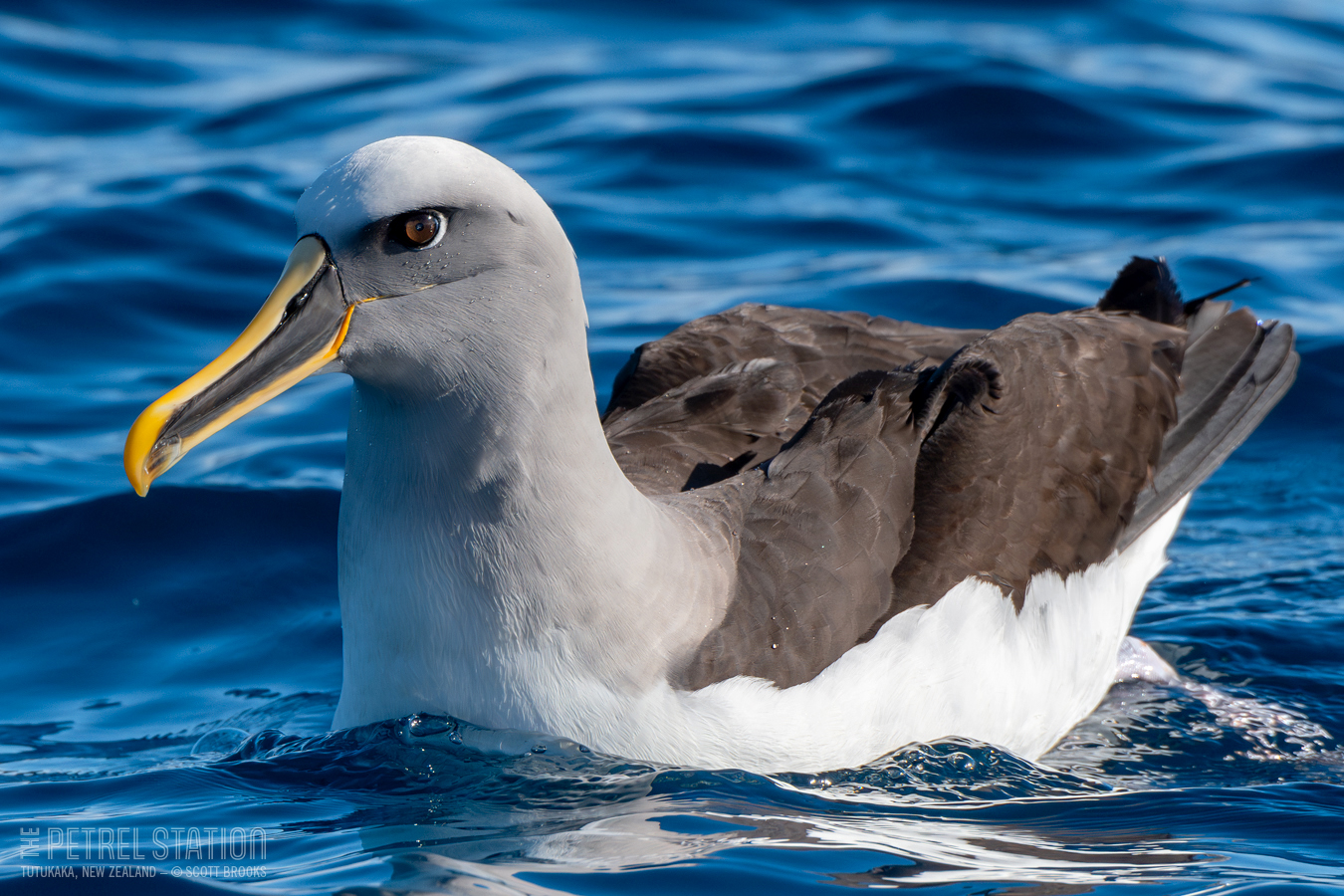
A Buller’s Albatross Thalassarche bulleri gives the tour participants a good showing
Note: When ACAP Latest News read that a special World Albatross Day pelagic seabird tour would take place in New Zealand on 19 June it wasted no time in contacting the tour leader with a request for a write up and a few photos of the outing. The following guest article by Scott Brooks is the welcome outcome.
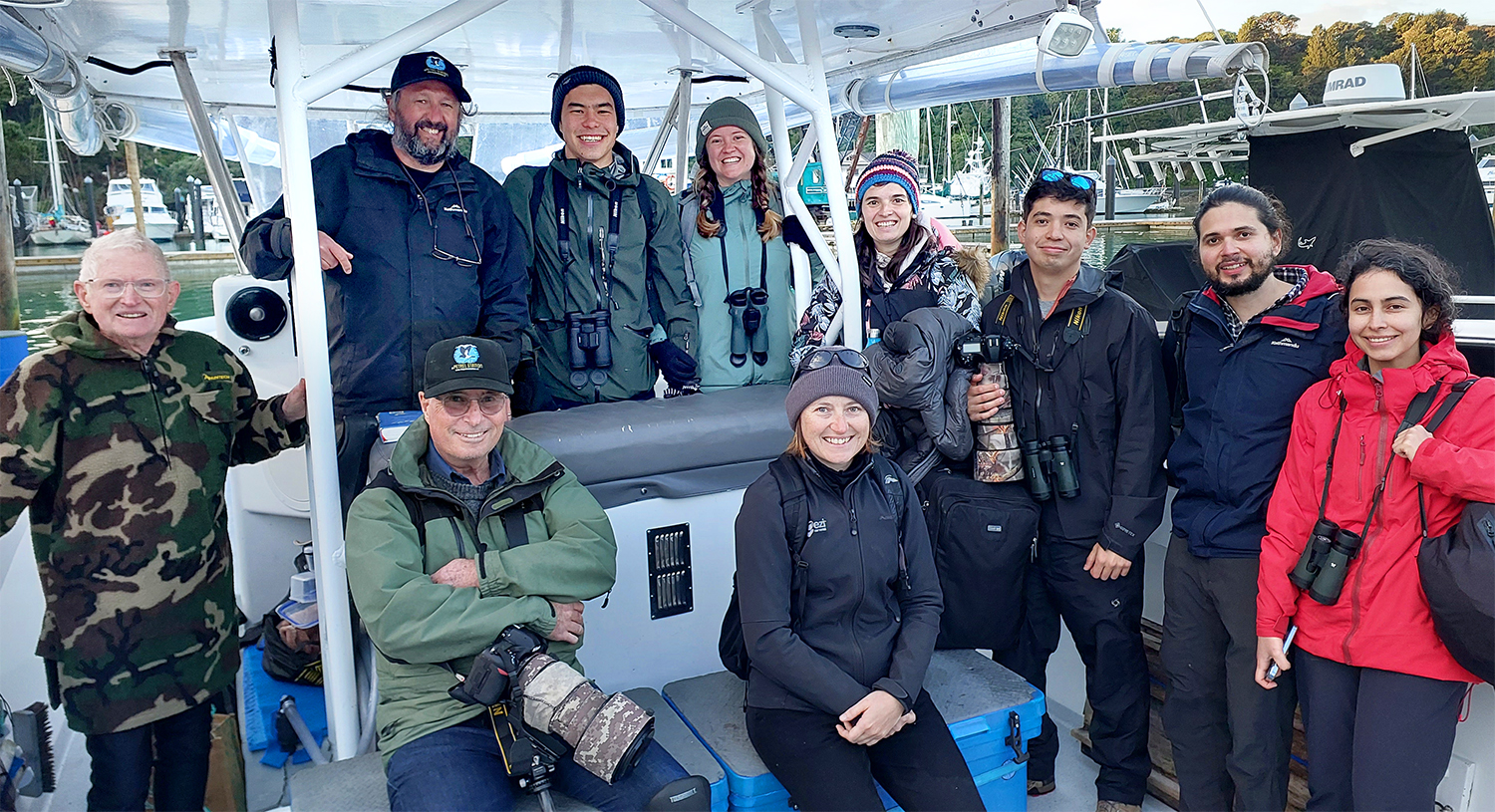
Participants on the World Albatross Day pelagic tour. Scott writes “I'm the bearded guy with the cap on the top left”
I’m Scott Brooks and I’m the founder of ‘The Petrel Station’ pelagic seabird tours and sightings research project, which operate offshore from Tutukaka in Northland, New Zealand. Naturally I had to have a seabird trip going out on the 19th of June to coincide with World Albatross Day to see what albatross, petrel and other seabird species we could see on the day, and also to help draw attention to the plight of these amazing seabirds as well as to show our support for the great work that ACAP is undertaking.
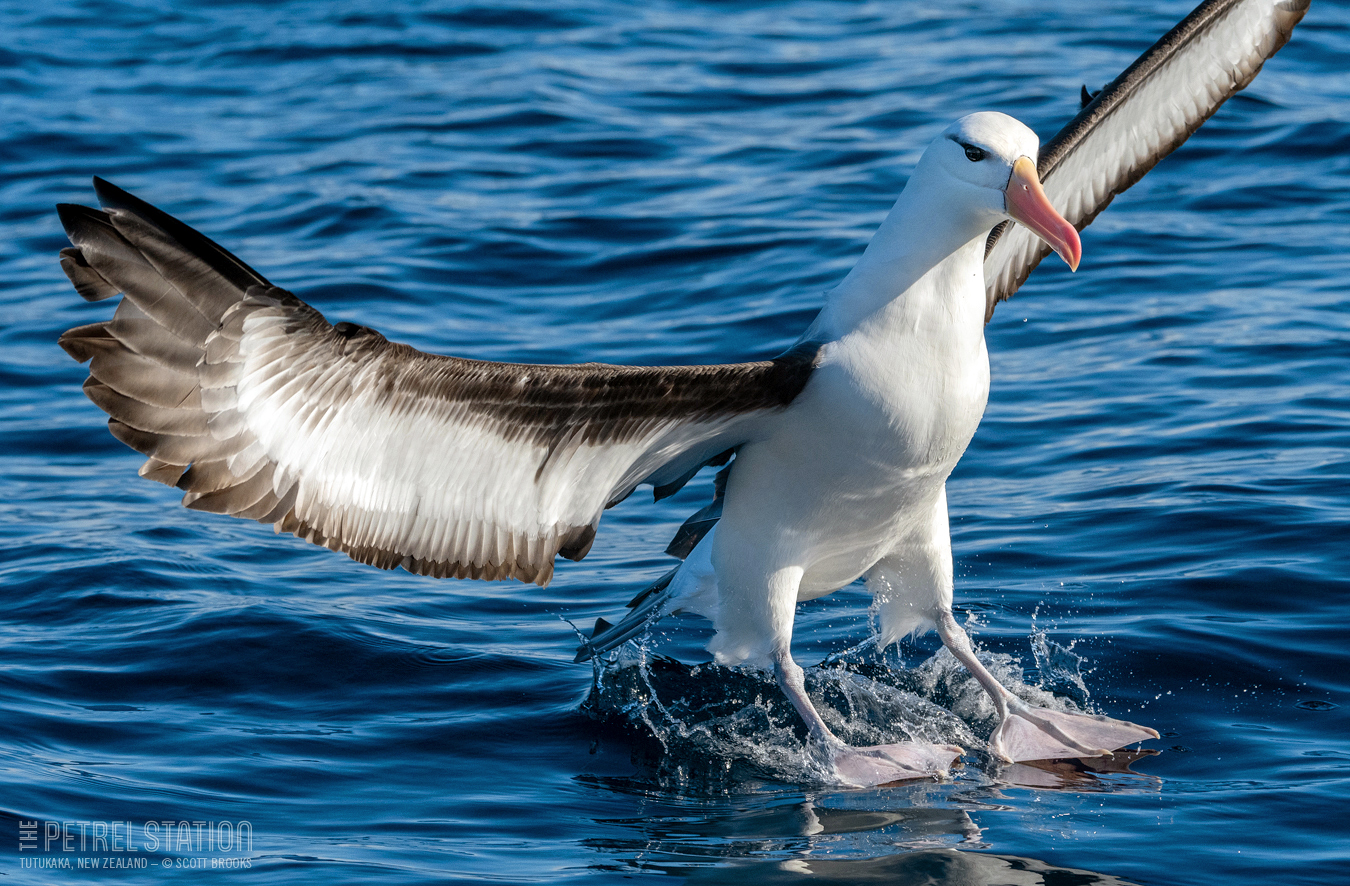
A Black-browed Albatross T. melanophris skids to a stop next to our vessel
When we headed out at sunrise on this winter’s day conditions were fine, with light 5-10 knot northerly winds, and a 1.2-m swell. The boat we use, named Hookie, takes nine people, plus me and the skipper, and we’re out on the water for the next 9 to 10 hours, which gives us a fantastic amount of time to enjoy the stunning seabirds. We head 40 km offshore out to The Petrel Station spot on the shelf edge where we spend about half the trip. Along the way we pass through three different habitat zones – shallower waters, the local breeding islands, and then the deeper waters out at the shelf edge. Each zone has its own range of seabirds and experiences.
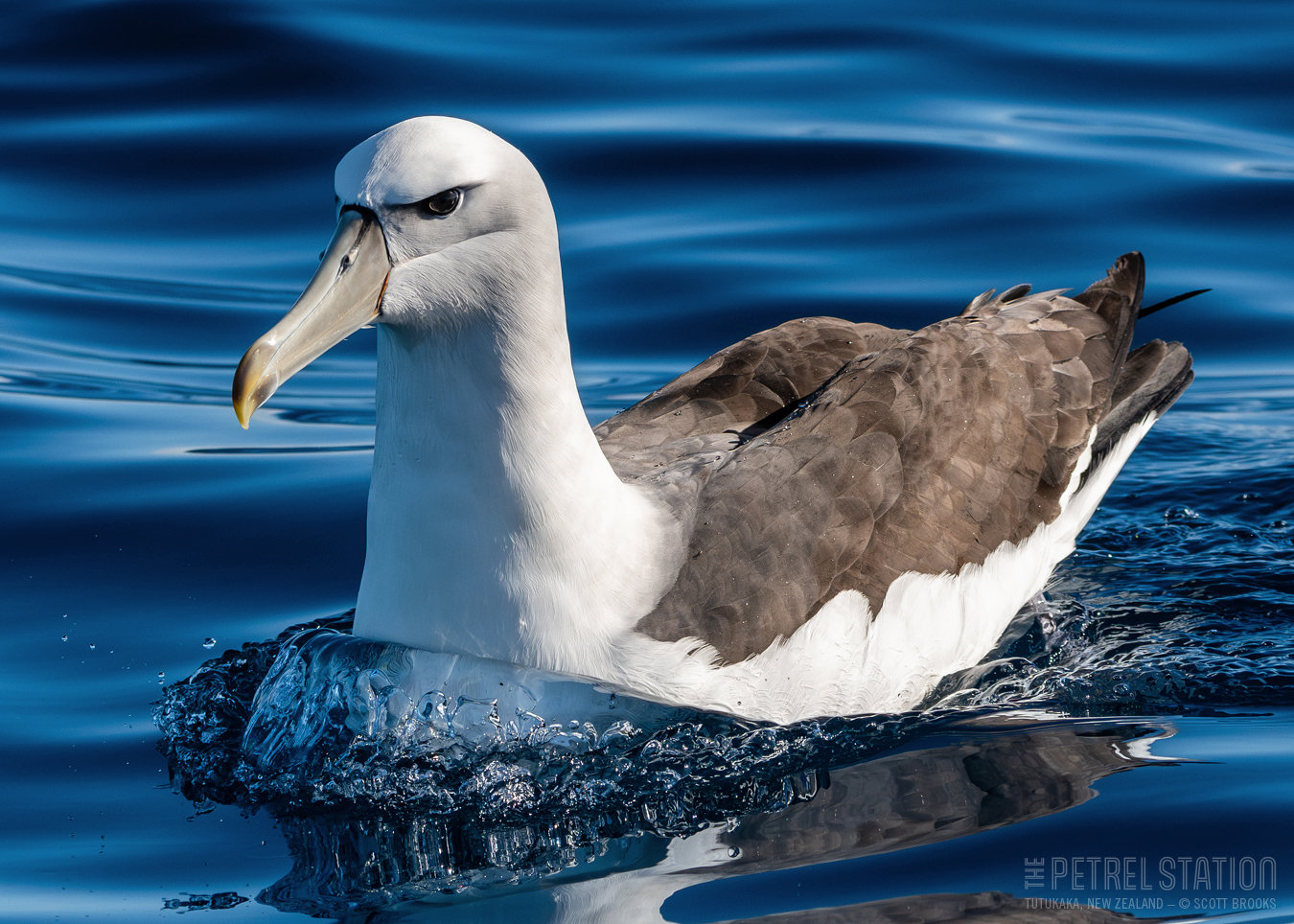
Close up! A White-capped Albatross T. steadi approaches the boat
On the day we had four albatross species come in close to our vessel, soaring gracefully around us, and hanging out just off the back of the boat. They are always a treat to see and a privilege to be in their company. The albatrosses were all from the mollymawk genus Thalassarche: Black-browed, Buller's, Campbell and White-capped. We had hoped some of the great albatross species in the genus Diomedea would turn up but with the light winds it wasn't too surprising not to see them.
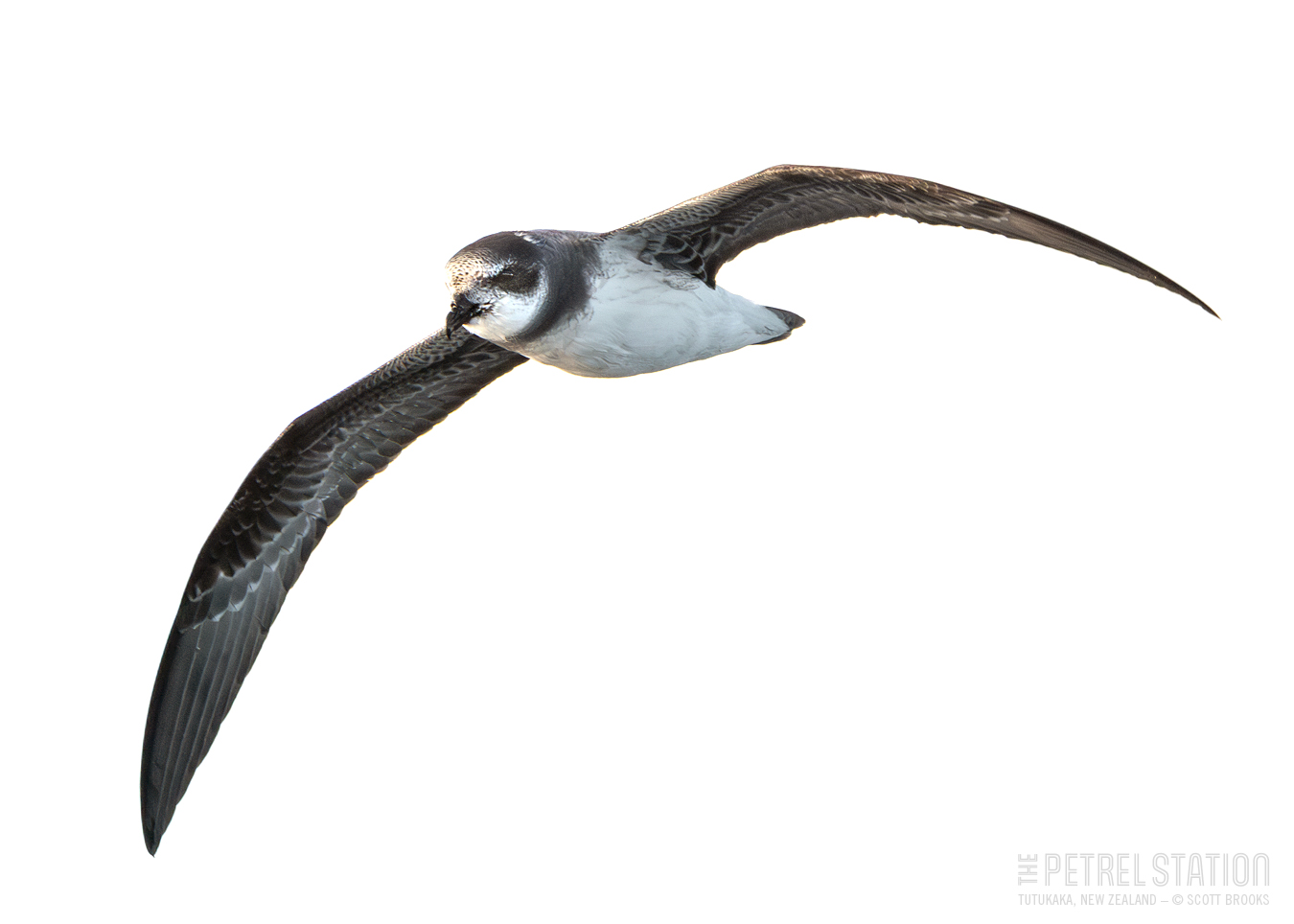
A rare sighting. A Soft-plumaged Petrel Pterodroma mollis
On the petrel front, a major highlight was a single Soft-plumaged Petrel, a species which is very rare to see this far north in New Zealand. We also had one Southern Macronectes giganteus and two Northern M. halli Giant Petrels (both ACAP-listed species), a Grey-faced Petrel Pterodroma gouldi, five New Zealand Storm Petrels Fregetta maoriana, approximately 700 Common Diving Petrels Pelecanoides urinatrix and some 15 500 Fairy Prions Pachyptila turtur. During the trip we saw 21 different seabird species and enjoyed watching nearly 18 000 stunning seabirds in total.
The seabird tours are being run in conjunction with a long-term pelagic seabird sighting research project which aims to identify distinct year-round and seasonal trends in the occurrence and diversity of all the seabird species present in the area (local, migratory and vagrant). It will also look for any variations occurring over the course of this the planned 15 or more years. Seabirds are an important indicator of the health of a marine ecosystem – currently many seabird species populations are declining as they are faced with a range of issues including commercial fishing (seabird bycatch and overfishing), climate change, warming oceans (which can alter where and when their preferred food supply is) and pollution and introduced pests at breeding sites. It’s important to gauge the diversity of seabird species that we currently have right now off our coast, and to monitor this long-term to get a better understanding of any future fluctuations in quantities and diversity of species present.
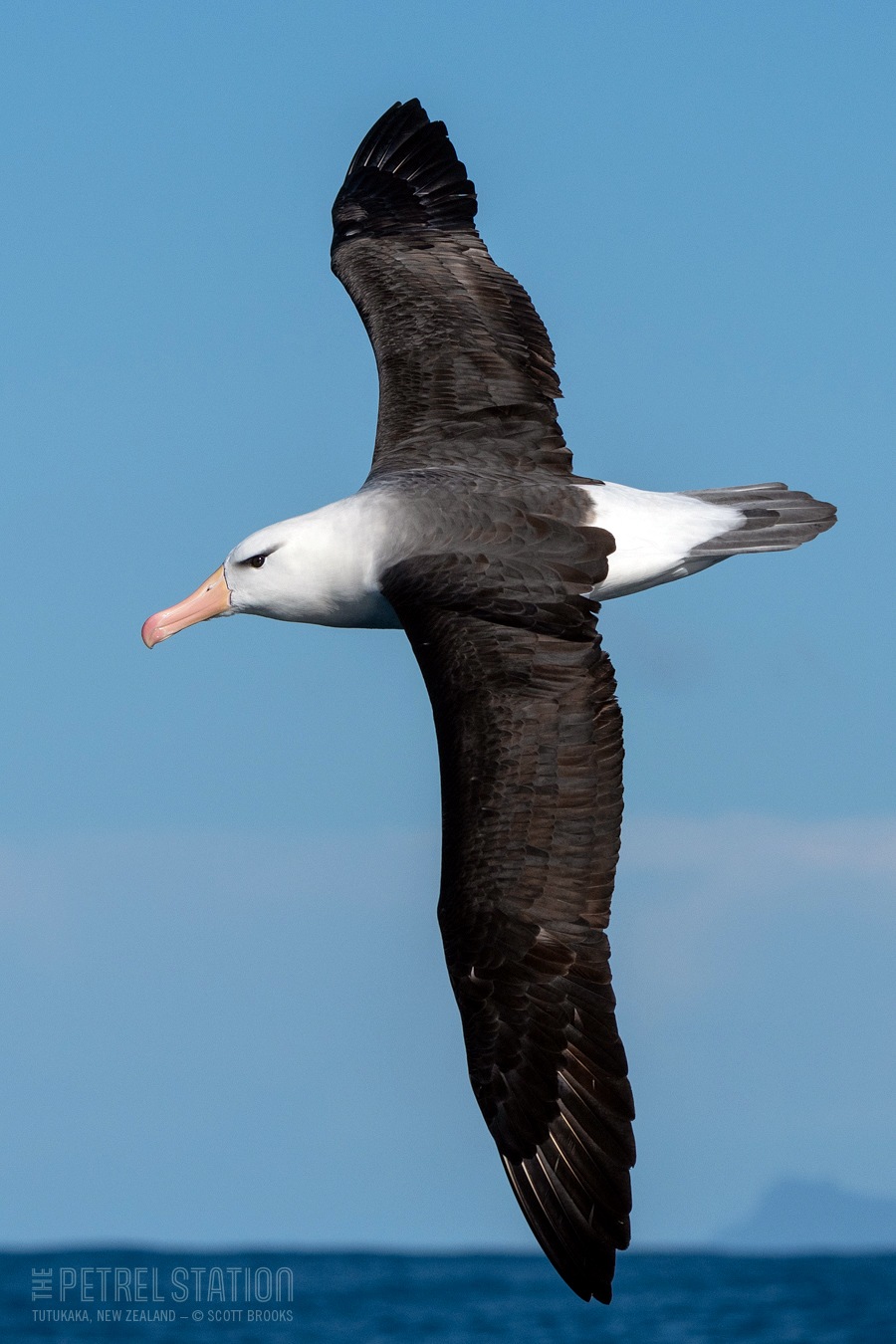
An adult Black-browed Albatross flies by the Hookie on World Albatross Day
All photographs by Scott Brooks
To date out at The Petrel Station we’ve seen 66 seabird species which total includes 10 albatross and 21 petrel species. To learn more about seabird tours and the seabird species we've seen, and to learn more about the sightings research project, check out The Petrel Station’s comprehensive website at www.thepetrelstation.nz. It also includes all the upcoming trip dates and other useful information. You can also follow us on Facebook, Instagram and at www.youtube.com/@thepetrelstation. If you’re ever in New Zealand and interested in coming out on a pelagic seabird trip, do get in touch – it’s always a grand day out!
Scott Brooks, The Petrel Station Pelagic Seabird Tours, Tutukaka, New Zealand, 27 June 2023

 English
English  Français
Français  Español
Español